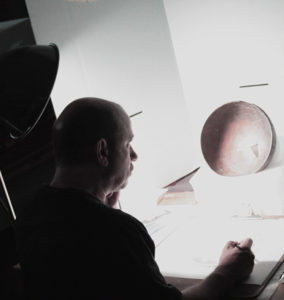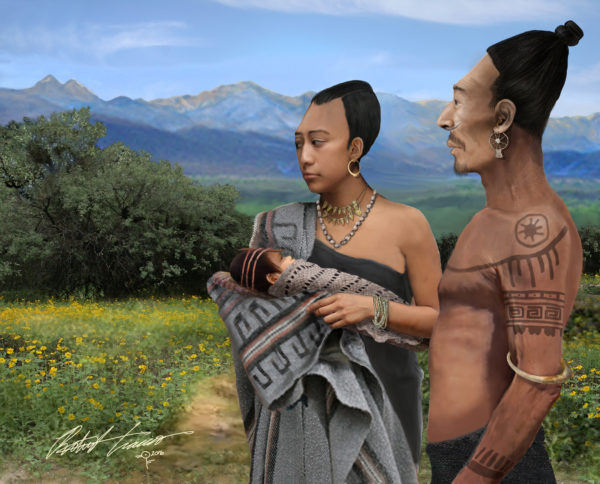
Archaeological Illustration with Rob Ciaccio: Bringing the Past to Life
Desert archaeologist, photographer, and artist-in-residence Rob Ciaccio talks about the archaeological illustration process behind his artistic reconstructions of past lifeways, which have been featured in Desert Archaeology reports and Archaeology Southwest publications, as well as on national monument signage.
In the days of my youth, I would find myself imagining what the area where I lived looked like 100 or 500 or 10,000 years ago. I thought back to the time when people were chasing mammoths around what would become the mundane town around me. At the time it seemed more interesting than watching sports.
Now my escapism has evolved into an intricate style of archaeological illustration that I variously call “artist’s conceptions” or “archaeological reconstructions.” In response to the radically changing built modern environment, fostering the public’s imagination into visualizing the landscapes of the past is crucial for maintaining our collective cultural perspective. In other words, you don’t know where you’re going unless you know where you’ve been. My job is to use my creativity to make where we’ve been a little more real.
I typically will be given an assignment to provide an image for a specific site. When preparing for a new image, it is important to identify exactly what we want to focus on. My first questions are “should this image take a close-up, intimate view of a specific activity? Or does the subject matter lend itself to a sweeping cultural landscape?” Often, as an image progresses, certain aspects of the archaeology come into surprising focus while new questions come to the surface.
The real challenge is to say as much as possible without committing to unreasonable speculation. For instance, we know where Hohokam ball courts were located, and their size. We do not have any contemporaneous descriptions of how the game was played. Local Native traditions and oral histories, woven together with the archaeological evidence left behind, can create a compelling image despite gaps in our present knowledge. Such an image may be better off taking the long view showing the relative size of the ball court compared to the crowds of spectators watching the participants. It would not be a stretch to show activities such as feasting and trading during the event as long as there is reasonable archaeological evidence to back up the ideas. It is always better to err on the side of caution than to indulge in too much supposition for an evidence-based archaeological illustration.
You can explore some examples of my work in the gallery below.
GALLERY (click images to enlarge and zoom)
Archaeological Reconstruction: Onavas Family
Here is an example of an interesting project I did for an issue of Archaeology Southwest Magazine. My assignment was to create an image of a family that lived in a prehistoric village near the modern town of Onavas in southeastern Sonora, Mexico. A burial mound there was found to contain a high proportion of individuals with moderate to extreme examples of cranial deformation. Examples of skull modification were found in various degrees in men, women, and children.
My job was to present these people as accurately as possible. My goal was to portray the humanity of the people from this 1,000-year-old village. I wanted the average viewer to get beyond the subjects’ unusual appearance with the elongated skulls and relate to them on a human level.
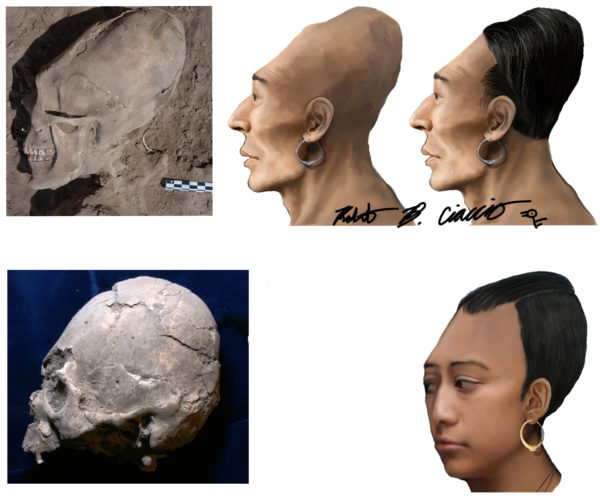
Top row: Adult male skull displaying extreme cranial deformation (left) with the artist’s reconstruction (right). Bottom row: female skull with moderate cranial deformation (left) and the resulting reconstruction (right) (by Robert Ciaccio).
I reconstructed the facial features to the approximate dimensions using only the photographic resources provided by the researchers in Mexico. I also wanted to illustrate the method of deforming the infant’s soft skull by the practice of head binding. Once the facial reconstructions were completed, they were vetted by osteologists involved in the research at the University of Arizona.
Now it was time to create my family portrait of people that lived, worked, and died along the banks of the Rio Yaqui, 1,000 years ago.
Archaeological Reconstruction: Salado Potters at Work
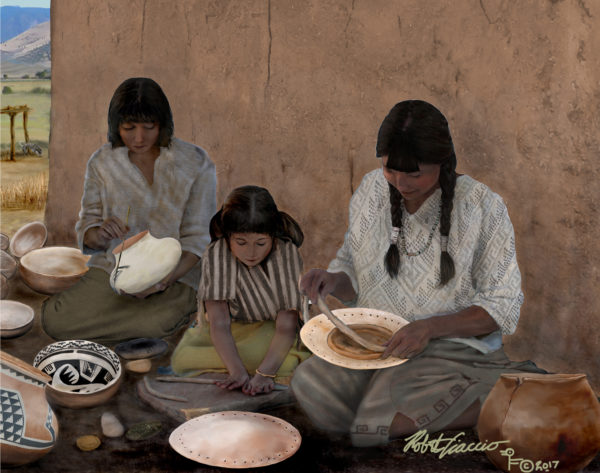
This image shows Salado potters at work. The woman coiling a ceramic vessel is wearing a shirt based on a preserved garment that was recovered from a cliff dwelling at Tonto National Monument near present-day Roosevelt Lake in central Arizona (by Robert Ciaccio).
Archaeological Reconstruction: Early Village Life
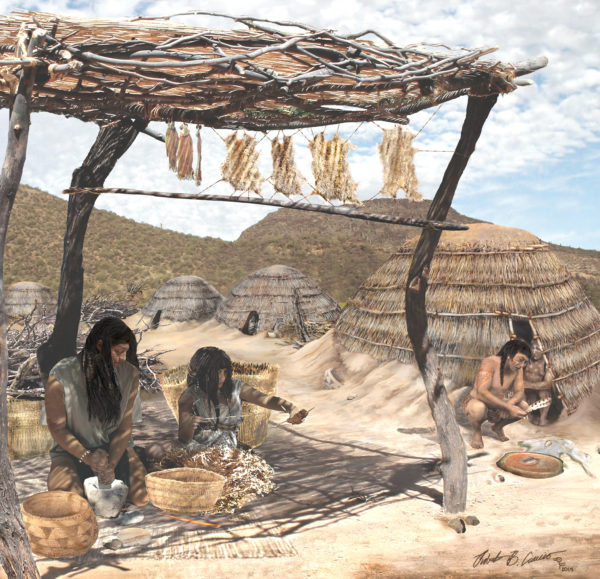
Here is my conception of an Early Agricultural period (2100 B.C.-A.D. 50) village at the base of Tucson’s “A” Mountain. The pit houses are based on excavation evidence at this location (see Resources, below) (by Robert Ciaccio).
Archaeological Reconstruction: Early Pithouse
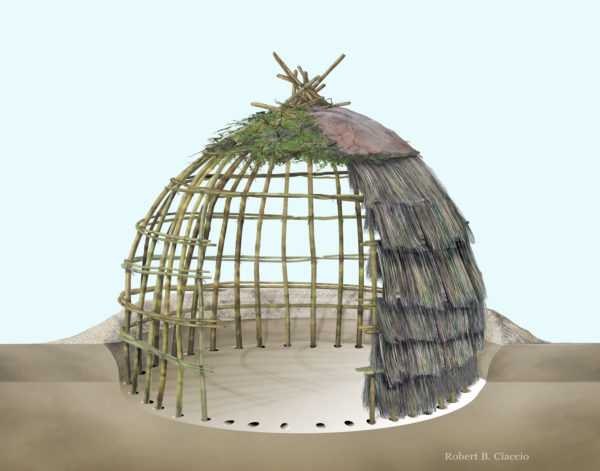
This cross-section of an Early Agricultural period pit house is based on data recovered during numerous excavations of archaeological sites dating to this time period in the Tucson Basin (by Robert Ciaccio).
Archaeological Reconstruction: Hohokam Ballcourt
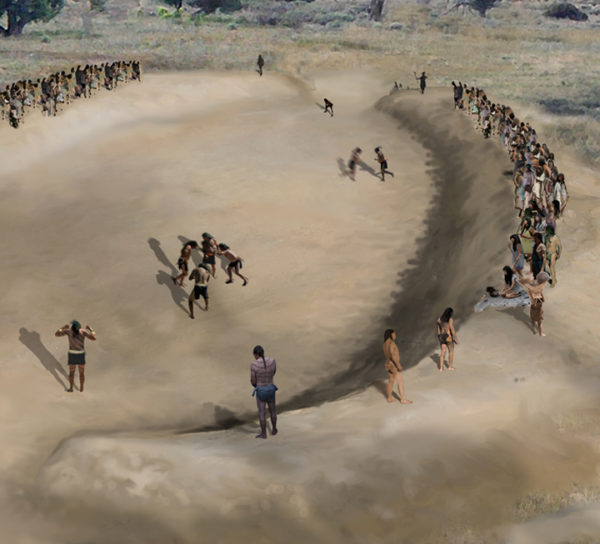
Detail of an in-progress artist’s conception of a Hohokam ballcourt during a game (by Robert Ciaccio).
Archaeological Reconstruction: Hohokam Village
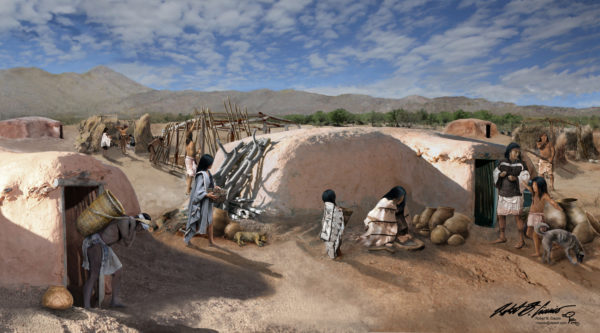
Honey Bee Village was a large Hohokam settlement dating to A.D. 650-1200, located north of Tucson in present-day Oro Valley, Arizona. This is a reconstruction of daily activities in one of the pithouse groups in the village (by Robert Ciaccio).
National Monument Signage: Casa Grande Ruins
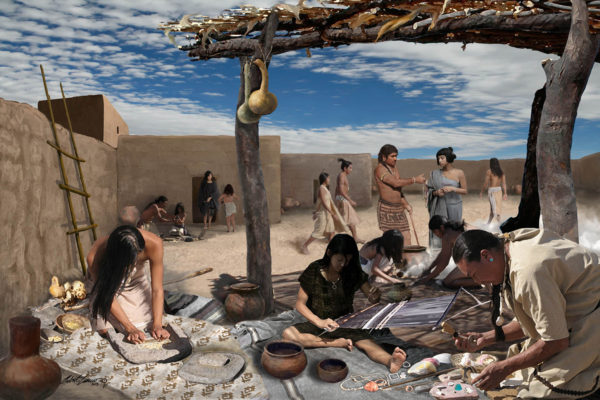
I created a series of images that appear on the wayside signs installed for self-guided tours at Casa Grande Ruins National Monument, located near Coolidge, Arizona. Titled “Life in the Compound,” this scene depicts daily life in this major Hohokam settlement (see Resources, below).
Artifact Illustration: Early Pipes
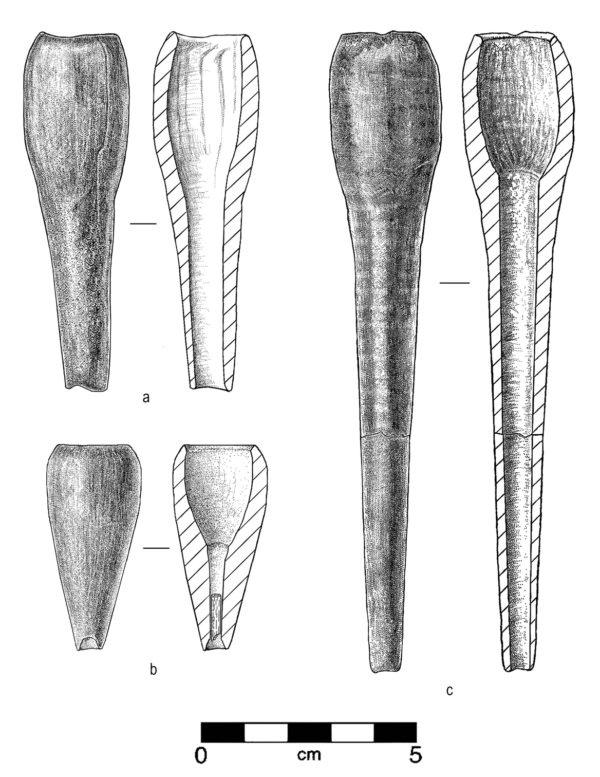
A more traditional drawing approach is needed to document artifacts. These are examples of smoking pipes from an Early Agricultural period settlement in Tucson (by Robert Ciaccio).
Artifact Illustration: Hohokam Bowl
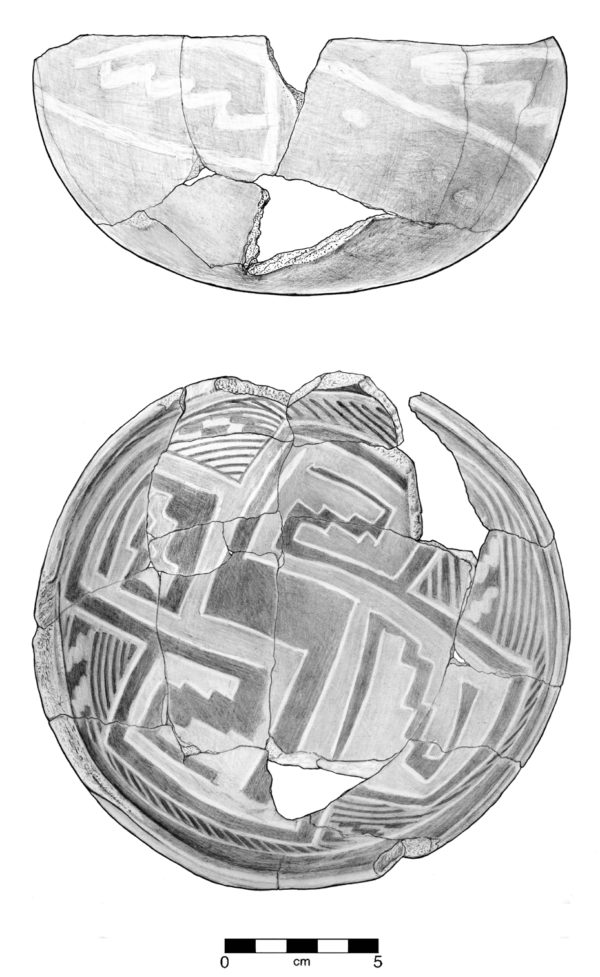
Some artifacts, like this Hohokam bowl, have been burned to the point that it is very difficult to photograph the painted designs. This is a pencil drawing that brings out the design of the bowl while reducing the dark burned areas (by Robert Ciaccio).
Artifact Illustration: Various Objects
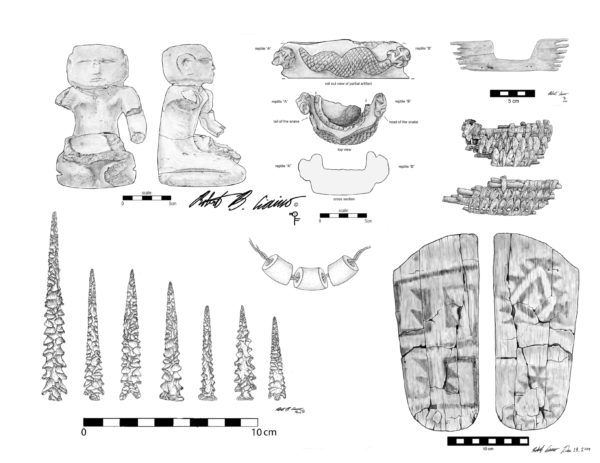
These are examples of some of my pencil drawings that were converted to digital ink drawings, showing a variety of artifacts (by Robert Ciaccio).
Rob is available to produce artifact photographs, pencil and pen-and-ink artifact illustrations, and multimedia artistic reconstructions on a contract basis. Contact our Tucson office for details.
RESOURCES
The Archaeology of Sonora, Archaeology Southwest Magazine Vol. 30, No. 3.
Postclassic Expansion of Mesoamerican Biocultural Characteristics into Sonora, Mexico, by James T. Watson and Cristina García. Journal of Field Archaeology 41, No. 2 (2016): 222-235.
eBook of a very old Tonto Cliff Dwelling visitor’s guide. Find the shirt from Rob’s reconstruction!
The complete final report of Desert Archaeology’s excavations near the base of A-Mountain west of downtown Tucson, where you can find information on Early Agricultural period pithouses and lifeways.
Guide to the waysides at Casa Grande Ruins National Monument, Coolidge, Arizona (Rob’s artwork appears on waysides 2, 4, 5, 9, 13).



